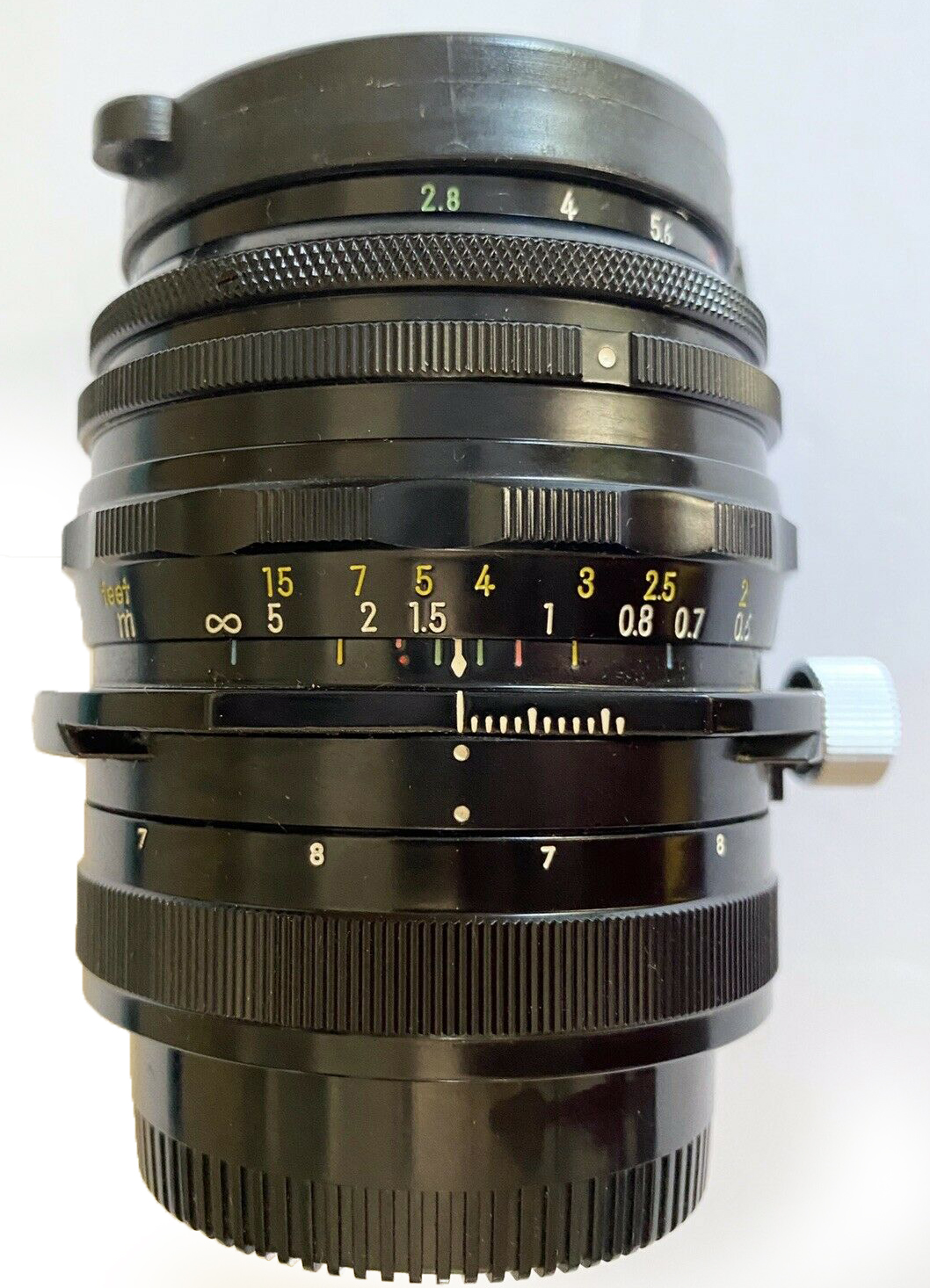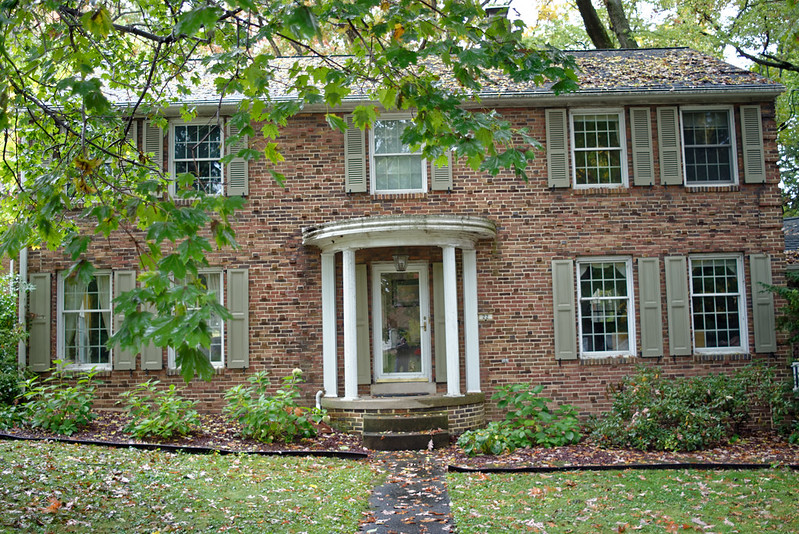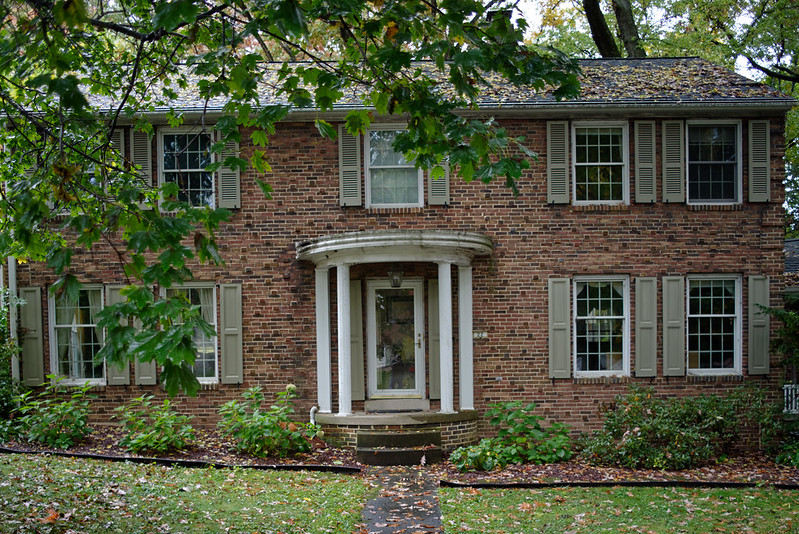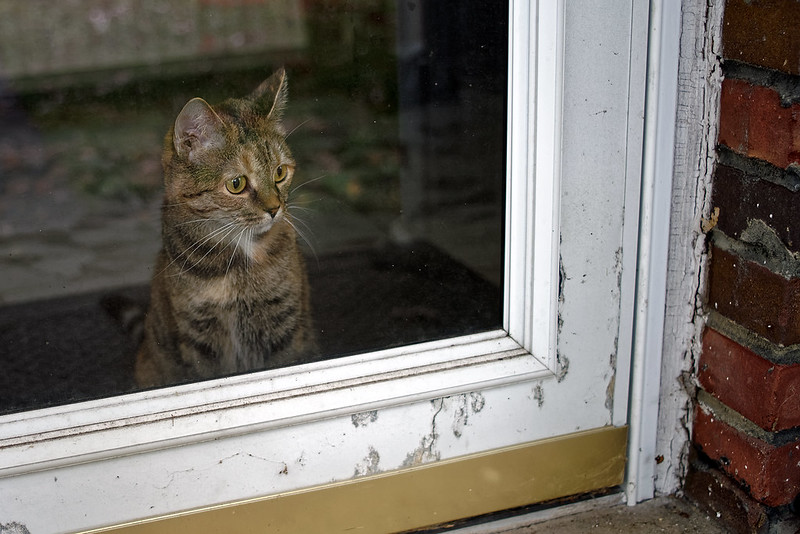PC-Nikkor 35mm f/2.8 (Perspective Control)

Introduction
This is a specialized lens made to photograph things like buildings in such a way that you can keep all of the vertical lines running straight and parallel. Using the lens as a regular 35mm f/2.8 prime is painful. You trade the ease of use of a more normal 35mm prime in order to do the magic shift capabilities of this lens.
Chances are, unless you have a specific need to photograph things and control the perspective this lens is going to be of little value to you.
For me it is of use. I don't photograph buildings, but I do photograph railcars. I often recreate the lettering on train cars / locomotives via decals or hand painted onto models. To work from an image of the prototype is very helpful to make accurate recreations in miniature. But, if the perspective is off, even just by a little, it can make the recreation lettering or painting (graffiti) look messed up.
Therefore, this lens has found a good home with me, but for 99% of the photographers out there, there is little need for such a lens. Much, if not all, of the perspective issues can be sorted out in software, making the need for such a lens even more reduced. However, getting the shot correct, optically, the first time - well, there is no software that can beat that for results.
You can also do the shift in the "wrong" direction for artistic purposes. This will exaggerate the already distorted lines for dramatic effect.
Specifications
The lens is built with eight elements in seven groups.
Maximum Aperture: f/2.8
Minimum Aperture: f/32
There is acceptable bokeh with mostly smooth blur and some rounded points of light due to the 9-bladed diaphragm mounted at the front of the lens.
The lens is strictly manual focus and, due to the nature of the tilt/shift configuration it is even a manual aperture. Many of you have likely not encountered a lens with a fully-manual aperture.
A lens with an automatic aperture is one that holds the aperture open, no matter where you set it, while you compose the shot. Then, as you press the shutter button to take the photo, and the mirror swings up, the aperture is choked down to where you set it.
However, this lens is setup such that when you set the aperture it darkens the view. This could make it difficult to compose and focus your shot. To aid with the aperture there is a second ring, just behind the main aperture ring, that turns easily from wide-open to whatever f-stop you select. If you select f/2.8 then this ring is fixed and will not move.
Also, the shift capability can be rotated to multiple positions. This means that you are not limited to just a vertical shift for a building (or just vertical / horizontally only).
Construction
As with all vintage, quality Nikkor lenses the barrel is made of metal and the functions work smoothly, with a nice click action to the barrel rotation.
The aperture ring is on the very front of the lens. Like some vintage lenses on classic view finder cameras you have to push in the aperture ring and then turn it to select a desired value.
Just behind the aperture ring is that ring discussed above to handle the fact that the lens is not an auto-aperture lens. This ring is very thin and when you are viewing through the camera it is hard to know what ring you are using as the controls are so densely packed at the front of the lens itself.
Making this even worse is that the focus ring is just behind this secondary aperture ring so sometimes when you intend to focus you are actually moving the aperture, or worse when you have composed the shot and intend to push the aperture into the position for the photo you accidentally change the focus. Clearly, the ergonomics are not great.
Then, there is the screw that does the magic shifting itself. You really have to move this while viewing through the camera and lens to know that you have shifted things just right. This is a time when perhaps the use of a tripod and live view on the back of the camera will help compose the shot.
Before you do the magic shift you also should make sure that you have rotate the main barrel of the lens into the desired orientation for the shift.
These "features" mean that this is not a grab-and-go, quickly shoot the thing, get 'er done lens. You have to take your time and work through all of the dials and knob settings before you are close to taking a photo.
Performance
Keeping in mind that this is a highly specialized lens, it works quite well.
When you shift the view greatly there is a tendency for the camera's meter to not know what to make of the input light and err towards under exposure. It is not a great amounf of error and I would prefer under-exposure to over-exposure any day as I can lighten things a little later in Photoshop but I can't darken something that is completely blown out.
Alternatives
If you are just looking for a 35mm prime, skip this and get something like the Nikkor-O 35mm f/2.
If you are really into the Perspecitce Control feature then perhaps the 28mm PC-Nikkor should get a lot of consideration as it is wider version. This may make it more useful with photographing buildings as they tend to be quite wide when you stand near them.
If you have access to a vintage camera with full bellows permitting tilt and shift functions, you can just as easily use that. However, the properties of this lens limit you just to shift, which can help as it reduces the number of things you can mess up like when you can do both tilt and shift. Also, this will work on a DSLR while your vintage bellows camera is likely film.
Examples
Following are some sample photos to demonstrate the power of this type of lens and some general uses which will likely yield good results. If you shoot things like these, then this lens may be a good one to think about adding to your camera bag.

In the above shot the view of the house is not corrected at all while in the example below the view has been corrected such that the lines of the house are kept straight and parallel.
The difference is perhaps subtle, unless you care deeply about such things.
You may also note that in the photo below the shot is slightly under-exposed, compared to the one above, which results in greater contrast.

The following shot is using the lens as a standard 35mm f/2.8 lens to take a photo of my little cat who missed me when I went outside to take the above example photos. It works fine for this, but this is not the intended use of the lens.

Check out more photos I have shot with this lens in my Flickr Album.